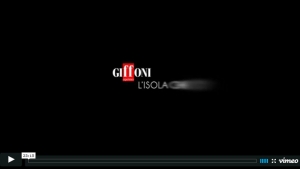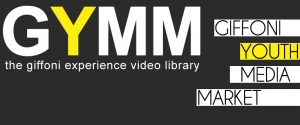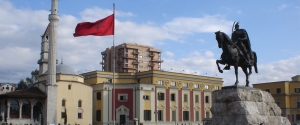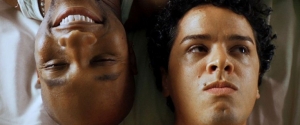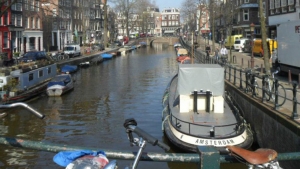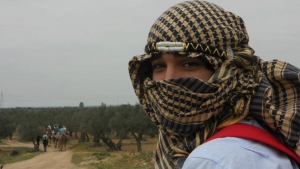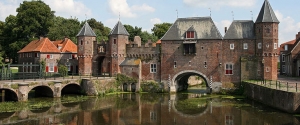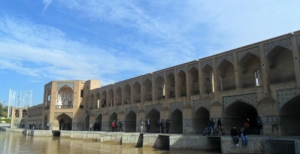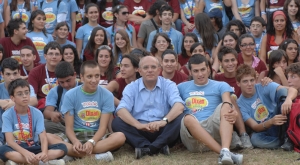
The line of the event
The story of an idea is often connected to a biography.In the case of the Giffoni Film Festival the interweave with regards to its events, its identity and the human journey of its founder, Claudio Gubitosi, is so tight that it is inseparable.The life of the event (the GFF) and the existence of the man (Claudio Gubitosi) are two rails of the same track of an almost 40 year old road.A road built metre by metre, moment by moment out of sacrifice, work, satisfaction, setbacks, difficulty and success.One of those fascinating “lines” that are not of a straight and flat nature but of a bumpy one, full of (more or less dangerous) bends and hairpin turns, crossroads and forks.A line that has crossed the lives of so many people and has had a great impact in the history of entertainment and culture, not only in Italy.
1971: the station of departureLet’s try and imagine the station of departure of such line.Let’s go back to the early 70s in a little village in the surroundings of Salerno with a little less than 10.000 inhabitants, out of the tourist map of the beaches and cultural treasures. An upstanding village embedded amidst the rough but precious arms of nature in the Picentini area. Well this is (was) Giffoni Valle Piana.Now, let’s try and outline the profile of a youth who has just come of age who cultivates a growing love for art. for music, the opera, and cinema.The history of mankind is full of these kind of scenarios and in the vast majority of these cases the story develops with the protagonists, particularly gifted and sensitive people, grown up in inadequate places, set off for more stimulating and warm environments.The youth in question is Claudio Gubitosi and his story is different because it will follow an unexpected turn outlining an alternative choice to the classic and, perhaps, easier escape of the talent!
Together with a group of friends he tests his intellectual vivaciousness by shooting films in super 8 and expresses his desire of music by playing the organ in the town’s church or any piano he happens to find his fingers on. But this is still not enough for him.The people who know Claudio Gubitosi usually refer to him as volcanic, a word that qualifies his restlessness (referring to his mind), his restless desire of creation, his erupting ability to crank out intuitions.Young Gubitosi must have had this burning magma already within him and could not be stopped. That is when he had this great idea that was immediately put into practice: the creation of something special for the village. A film festival.Nothing new one might think.Well what made this idea so original was the type of films elected for the festival. Movies for children and youngsters. A genre that has acquired dignity and strength in time and is as respected as any other today; a genre that is getting bigger and bigger and earning consensus in the market. However, this is modern history. Let’s go back to 1971 and consider that in the “plumb years” the films dedicated to youths had no appeal at all. The issues on fire in Italy were of a political and social nature!Therefore, Gubitosi’s idea, which seemed already bizarre to start with, is a “revolutionary” one if you think that the children and youths were called not only to watch the films but also to judge them and award the best ones too.Children and youths, there were plenty of in the village and there were two movie theatres in Giffoni. But nothing else. Starting with the limited number of films of the genre. And money? Let’s not even go there. The start is a rough one, hard work for the simple pleasure of cultivating a crazy idea, but Gubitosi and his posse are hopeful and believe in its strength. And like any other crazy and strong idea it immediately seems like the key to change the world…well at least their own world.
The ’70s: going past the North East
The first few editions are, thus, characterised by limited resources and films- most of which are found by “predating” the stockrooms of the Italian distributors and without any real selection-which make the pioneer Giffoni Film Festival a very intimate affair. The locations are found with a very creative and fighting spirit. However, the piazza and the shaky set design could not make the village what we today call a location!But things turn around very soon. Pushed by the impetuous strength of Gubitosi & co and by a community that cranks out enthusiastic volunteers and shows great affection for the initiative and, most of all, thanks to an idea that does not accept any compromise or easy short cuts (the films must be targeted to youth and the jury must be solely composed of youth) the festival grows and opens up to new paths.In particular the festival starts looking at Northern Europe and at the Soviet Union, a wonderful creative environment indeed even if also tore by high walls and iron curtains! The Russian fairytales and the German and Scandinavian feature films: The GFF brings an unknown world to Italy presenting it to its “jury in shorts”( as it was seldom defined for the typical wear so popular among youngsters back in the day). But these are not the only eyes open on the festival. Not long after journalists and producers seem to discover this little event dedicated to the unripe age too. Everyone is suddenly fascinated; or at least intrigued.
The 80s: the difficult road fo the thinking heads
If the thematic path proposed by the GFF in the 70s crosses the happy valleys full of fairytales and fantastic stories (almost an escape from the dramatic exasperation of such difficult years torn by terrorism and post-boom economy) the 80s are characterised by a more bumpy road for sure. There are urgent choices to be made, the survival and the evolution of the festival are at stake. The growing number of productions dedicated to children and youth does not coincide with a stylistic growth. Light products and a not so excellent quality seem to depict the children and youth panorama as a consolatory “ wonderland”. Gubitosi knows that this is not the kind of cinema he can present to “thinking heads” even if they are not adults yet. Therefore the crossroads is clear: it is either to follow the road that leads to wonderland or to outline a more complex path where adolescents can confront themselves with issues that can challenge them and have them think.The whole world becomes the platform for the search of adequate films. By doing so, demonstrating once again coherence and derring-do, the GFF leaves the schmaltzy road in favour of the one of the “thinking heads”!From Sweden to Australia, from Spain to New Zeeland, passing through Iran, Norway, Canada, France and Albania new images and real stories focusing on the desires, fear, dreams, anguish and strength of a generation bred in the ashes of the great cultural and social movements of the 60s and 70s hit the screens in Giffoni.
1982: a milestone called Truffaut
It is men who write history.This is a theorem and not only a simple hypothesis. And it applies perfectly to the eventful story of Giffoni too.Its most important and pivotal turn, its custom clearance in the world of top culture and entertainment has a name: Francois Truffaut; the great French filmmaker, the charismatic leader, together with Goddard, of the Nouvelle Vague which started a revolution in France at the end of the 50s which still reflects on today’s cinema.Truffaut was already a “legend” in 1982, applauded by critics and awarded with the most important prizes a filmmaker could wish for, Oscars and Palme D’or included. It is indeed in 1982 that Gubitosi realises another one of his dreams ( or one of his “visions” never too ambitious to reach): bring the great director to the festival.The story of the presence of Truffaut at the GFF and of his relationship with Gubitosi would deserve its own chapter, a special issue, but what we cannot forget to mention in this occasion is the affection and wonder that the French filmmaker felt towards the festival that led him to write a letter which has become like a sacred act for the GFF and a sort of cultural “testament” that has spurred all of the organisers who have worked at the festival over the years. The letter includes the words: “of all the film festivals Giffoni is the most necessary”.What did Truffaut mean with those words? Certainly the need of a festival such as Giffoni is in its vivid attention towards the world of children and adolescents, for its ability to give youth a voice and to be heard, for its calling to bring the biggest names of culture and entertainment together with the youngsters and for its quality as a powerful distributor of cinema, in particular films dedicated to youths, which was starting to attract attention back then and is now one of the most affirmed genres of the market. Truffaut opened the way to a long list of Italian and International talent who come to Giffoni not to promote their current project but to simply meet the young jurors and talk with them about the most diverse issues. From Robert De Niro to Sergio Leone, from Michelangelo Antonioni to Alberto Sordi the 80s consecrate the GFF as one of the most precious cultural events on a National and International level.
The 90s: the GFF starts again from three
The 90s inherit a festival in great shape and ever more relevant in the global panorama.The selection of the films becomes more refined, the organization is composed of real motivated people. The time of charity work is well over. The leaning of the festival - still directed by Claudio Gubitosi who conveys to his creature soul, coherence, creativity with the same enthusiasm as always - is also clearer, and focuses on a well calibrated alchemy of fantastic, adventurous and thought provoking opuses.It is now apparent that you can no longer talk of just one kind of cinema for youths. The expectations and the reading tools of a 10 year old child are totally different from the ones of an adolescent . The festival needs to differentiate the proposal of the films dividing the competition into different sections given the generational changes and also the wants of the film market.
The festival becomes three! Between 1996 and 1998 three competitive sections see the light of day: FIRST SCREENS (9-12); FREE TO FLY (12-14) and REAR WINDOW (15-19) which is created as “Questions from one century to the other” and is finally renamed Y- GENERATION.Each age group has its own films, stories, issues and language.The films presented in Giffoni are ever more refined and made by great authors, with great thespians who are about to hit it big in the world of cinema. Two names in particular come to mind: Elijah Wood and Leonardo Di Caprio are the protagonists of two movies presented in 1996 and are about to make a huge impact in the world of show business. Another fundamental choice carried out by the GFF in these crucial years is with regards to the expansion of the activities beyond the canonical festival week in July.Gubitosi cranks out new initiatives allowing the Festival to work all year round and show a growing number of children and youth the beauty of films targeted especially to them.
MOVIE DAYS is created with this purpose and by an urgency of development by the GFF. The need is to promote “its own” cinema, to promote ideas to an ever growing audience. Hundreds of jurors, ready to watch, fall in love with and discuss films was no longer enough. It was important to organise extra screening days alongside animation, discussion and meetings with talent to allow the GFF’s main audiences to enjoy its activities: that is the schools. In other respects there was a growing request for the Giffoni Festival to distribute its films that were so far only watched by “few chosen viewers”( that is how the youth who partake in the GFF jury are often called). Since 1997 the MOVIE DAYS have been renovated year after year and have amused, touched, had youth dance, talk, learn (the secrets of cinema) in large numbers. 30 thousand circa a year! After the first successful editions MOVIE DAYS is ready to become an exportable format in other places, other towns, always adapting itself with surprising easiness to the spirit of the place.
The initiative known as MOVIE DAYS ON TOUR is exactly this, a proposal of films and games brought into other geographical realities. Realities often lacking of any kind of infrastructures and Movie theatres, such as the first experience of this event. It was the case of Sarule, in the province of Nuoro, in the heart of Barbagia, Sardinia. An extraordinary success which attracted the entire region to the little village reaching out to every single citizen apart from the whole community of students. A success that launched an incredible number of other requests to which the GFF has always answered with enthusiasm and commitment, adapting time after time, the formula to the hosting territory. Bari in Puglia; Potenza and Lauria in Basilicata; Pomezia and Rome in Lazio; Bianco and Taurianova in Calabria; Nuoro and Sarule in Sardinia; Avola in Sicily; Marcianise and Benevento in Campania; Carate Brianza in Lombardia. Just to name a few of the gigs of a project that seems destined to keep on going for a long time ahead. The formula also sprang another special project: Movie days Hospital, that is the GFF’s cinema and fun related proposal for the paediatric wards in hospitals.
The 90s are also the years of the consolidation of a festival which is now able to attract National and International stars, great filmmakers and politicians.
The new millennium: Internationalisation and the Valley dreamIf the first thirty years of the GFF went by, ponderously at first and then lightly as the years rolled on, focusing on the idea to bring the world to Giffoni, the second phase, started at the dawn of the new millennium with another purpose in mind: to bring Giffoni in the world. Travelling, and marking the stops of Giffoni in the world is a winning formula. A strong idea in support of a changeable format capable of adapting to the various geographical realities it encounters on its journey. The GFF formula can be modified. Articulated. It expresses the same joy and energy of its Father-festival, respecting the territorial differences and the diverse requests of whom chooses our idea to open up to the world of youth and cinema. The first test is set up in Berlin in 2000, followed by Miami and the Next Gen Film Festival. A success that reaches out to tens of thousands of students in two years.
At the same time, in Europe, Poland and Albania open their doors to the GFF concept. It is love at first sight. 2005 marks a very important year with regards to the International activities. The year starts with an event held in Australia, in the cultural capital Adelaide, the venture will continue with the foundation of an association named Giffoni-Australia with its headquarters in Sydney where two new events of the GFF take place in 2007 and in 2008.
The year ends with the first explosive edition of Giffoni Hollywood with guests such as Will Smith and Jon Voight. For the following two years the event takes place in the Kodak Theatre (that is where the Oscars are held) and with the awareness of being pioneers in the exportation of a film festival in the “world capital” of movies. In order to face the impressiveness of the internationalization of its brand, the GFF creates a structure that goes by the suggestive name of Giffoni World Alliance. It is a real network. A system where every knot is connected to the centre of the branch point which is the GFF.
Another pivotal year in the history of the GFF is 1997.
It is the year when the first stone of the Cittadella del Cinema is put down. The first stone of a dream, Claudio Gubitosi’s great dream which started in the early 80s. A dream named: Giffoni Multimedia Valley. GMV is the idea of a man. The idea of director Gubitosi: one of those fascinating adventures of the mind that sometimes become real and that once within the head never let go. GMV is a revolution and that is not only for the Giffoni Film Festival, but for the entire territory. The project is about building a great area dedicated to creativity and culture, capable of gathering in one place modern and efficient structures for “cultural entertainment” and audiovisual production, day care centres for youth, laboratories dedicated to the study of new forms of artistic expression.
An heterogeneous space that suggests, thanks to original architectonical solutions, the idea of a deeply organized area but also an insight to change and trends imposed by the velocity of the modern world. GMV is a perfect place where one can spend time playing and learning and where youngsters but also their families will have the opportunity to experience amusement and cultural pleasure. The aim is to turn this idea into a gravitation centre of the energy of the youth, a nucleus of occupational condensation where young people will finally find a place to express their creativity and put their know-how, their experience into practice.
GMV is a pragmatic project with planned activities modelled time by time according to the structures and functions, in consideration of the fact that it is not simply a nice container to fill in but a complex picture where form and substance are inseparable. Strong contents that write and interpret the cultural codes of the past, the present and future. The first part of this project has been available since 2000. That is the Cittadella del Cinema. In 2007 a new piece was added, that is the monumental glass roof of the square.
History cannot be stopped and the years to come will see the total realisation of the idea, of the dream. In the meantime, what would happen if we tried to balance the books of the GFF?What does the GFF, at the eve of its 40th year celebrations represent? Which are its merits and what kind of approach to the future does it have?
First of all the films dedicated to youth have been taken away from the dark placenta of B movies and niche cinema and placed deservedly under the lights.
Together with the growth of this kind of cinema the GFF has contributed, year after year, edition after edition, to put the focus on the idea that children and youth are aware and capable of filtering through their own interpretative mode (more or less refined according to their age and social and cultural walks of life) films and of judging, without any conditioning by adults, the quality of form and contents.
During the last four decades (and this will be its predominant feature also in the years to come) the GFF has continuously calibrated its tools towards the approach of infanthood and coming of age by not only simply modernizing its programmes with superficial face lifts, or by just following the latest trends; but by looking ahead of the times, reading between the lines, developing new strategies to monitor the planet of youth. All this was always pushed by the concept that youth are not the representation of the future, that is they are the future of course, but they are most of all the “present” and must be heard without procrastinating. The 2009 and 2010 editions will be marked by new turning points and new paths for everyone to follow with stupor, wonder (hopefully) and that will be the most neat and vivacious proof of a freshness and vitality that time cannot destroy but corroborate even more.


